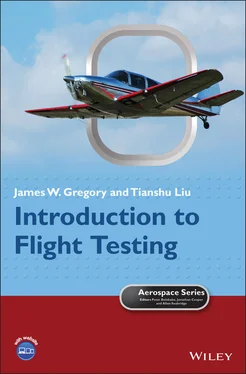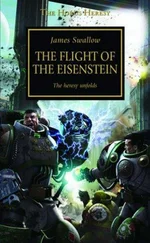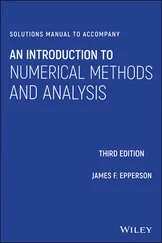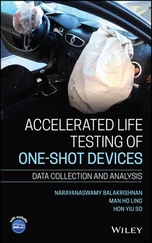1.3 Objectives and Organization of this Book
Our objective for this book is to provide the reader with an introduction to the exciting world of flight testing of light aircraft and UAS. Within the broad theme of that overarching objective, we specifically seek to:
1 (1) Provide a solid foundation for the reasons why flight testing is done the way it is. This involves a clear and concise establishment of the theoretical principles. Each equation that is presented here is backed up by physical explanations of the phenomena involved.
2 (2) Offer aerospace engineering students the context for connecting engineering theory with practice through guided flights in an aircraft. This provides the student with a visceral, empirical way of connecting their theoretical knowledge of flight with practical knowledge. The goal is for the student to develop a tacit understanding of flight beyond the explicit knowledge gleaned in traditional classrooms.
3 (3) Introduce the concepts and practice of digital data acquisition and signal processing, which is the underpinning of complex industrial and governmental flight test programs. These concepts are typically not taught in the undergraduate aerospace curriculum, but are important for knowing how to acquire and analyze flight test data using advanced, micro‐scale sensors and digital data acquisition systems.
4 (4) Provide an overview of many of the foundational flight test topics encountered in performance flight testing. Individual chapters address each topic in turn, starting with the theoretical basis for that aspect of aircraft performance and moving on to flight test methods for acquiring and analyzing data for each performance metric.
This text is partitioned into two main segments – the first half of the book (Chapters 1–6) deals with preliminary content and fundamental principles, while the second half (Chapters 7–16) covers a series of flight test topics in detail. The flight tests covered here focus predominantly on the performance and stability characteristics of an aircraft. We predominantly focus on light general aviation aircraft and UAVs, since these are accessible to most students, and optimal learning takes place when a student can experience flight testing firsthand. The material is designed to be accessible such that a student can go with a qualified pilot in nearly any general aviation aircraft and acquire meaningful flight test data. Dedicated flight test instrumentation, modifications to the aircraft, or expensive hardware is not required. Thus, many of the flight test methods presented here may be simplified relative to what is done in industry.
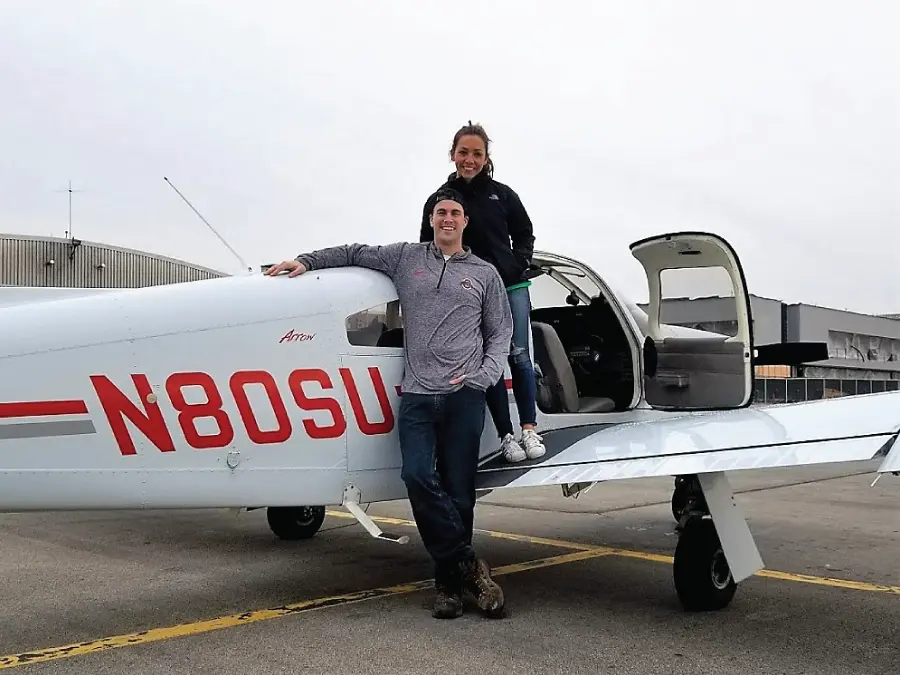
Figure 1.14 Ohio State University students Greg Rhodes and Jennifer Haines following turn performance flight testing in a Piper PA‐28R at the Ohio State University Airport.
Source: Courtesy of Greg Rhodes and Jennifer Haines.
This textbook should not be regarded as a definitive or even advisory source on how to conduct flight testing. Instead, this book should be considered a general introduction to the ideas, scientific principles, theoretical foundations, and some of the best practices associated with flight testing. We provide a mix of aircraft performance theory with flight testing methods. Our goal is to invite the student or practitioner into understanding the physical fundamentals underlying flight testing – this will enable the reader to more fully appreciate why flight testing is done the way it is, to spot errors or problems in theory or procedures, and to know how to adapt established practices to unanticipated circumstances or new vehicle concepts. So, our aim is to provide a general overview and introduction to flight testing: a general idea of the nature of the field and a sound theoretical basis for what is done. We hope that this book will be a good first step as preparation for entry into the flight testing domain, where more detailed methods can be picked up on the way.
Official publications, standards, and advisory documents from the relevant civil aviation authority must be regarded as the definitive source for guidance on how to safely conduct flight testing and how to provide sufficient information to comply with the certification requirements. In the United States, this documentation is primarily found in 14 CFR 23, FAA Advisory Circular 23‐8C, and any consensus standards accepted by the FAA (such as standards produced by ASTM International's F44 committee on General Aviation Aircraft). Other helpful sources of procedural and practical information are found in Hamlin (1946), Smith (1981), Stoliker et al. (1996), Stinton (1998), Kimberlin (2003), Ward et al. (2006, 2007), McCormick (2011), Mondt (2014), Corda (2017), and the publicly available flight test guides from the governmental flight test organizations (Herrington et al. 1966; USAF TPS 1986; USN TPS 1977, 1997; Gallagher et al. 1992; Stoliker 1995; Olson 2003). More advanced details on system identification for aircraft are available from Klein and Morelli (2006), Tischler and Remple (2012), or Jategaonkar (2015).
Flight testing is a fascinating, exhilarating field of aerospace engineering. It's incredibly rewarding to connect theory with practice, and we hope that the thoughts we provide here will draw students into a deeper understanding of flight through the intertwined approaches of theory and flying in flight test. And we hope to inspire the next generation of flight test professionals ( Figure 1.14) to pursue this fascinating line of work. Hang on for a wild ride!
MMOmaximum operating Mach numberVMOmaximum operating limit speedVNOmaximum structural cruising speed
Acronyms and Abbreviations
AAFArmy Air ForcesCFRCode of Federal RegulationsCGcenter of gravityDT&Edevelopmental test and evaluationFAAFederal Aviation AdministrationHARVhigh alpha research vehicleLEXleading‐edge extensionNACANational Advisory Committee for AeronauticsNASANational Aeronautics and Space AdministrationOT&Eoperational test and evaluationPSPpressure‐sensitive paintUAVunmanned aerial vehicle
1 ASTM Committee F44 on General Aviation Aircraft, Subcommittee F44.20 on Flight. (2017). Standard Specification for Weights and Centers of Gravity of Aircraft. F3082/F3082M‐17, approved 15 October 2017, West Conshohocken, PA: ASTM International. doi: https://doi.org/10.1520/F3082_F3082M-17.
2 ASTM Committee F44 on General Aviation Aircraft, Subcommittee F44.20 on Flight. (2018a). Standard Specification for Performance of Aircraft. F3179/F3179M‐18, approved 1 May 2018, West Conshohocken, PA: ASTM International. doi: https://doi.org/10.1520/F3179_F3179M-18.
3 ASTM Committee F44 on General Aviation Aircraft, Subcommittee F44.20 on Flight. (2018b). Standard Specification for Aircraft Handling Characteristics. F3173/F3173M‐18, approved 1 December 2018, West Conshohocken, PA: ASTM International. doi: https://doi.org/10.1520/F3173_F3173M-18.
4 ASTM Committee F44 on General Aviation Aircraft, Subcommittee F44.20 on Flight. (2019a). Standard Specification for Establishing Operating Limitations and Information for Aeroplanes. F3174/F3174M‐19, approved 1 May 2019, West Conshohocken, PA: ASTM International. doi: https://doi.org/10.1520/F3174_F3174M-19.
5 ASTM Committee F44 on General Aviation Aircraft, Subcommittee F44.20 on Flight. (2019b). Standard Specification for Low‐Speed Flight Characteristics of Aircraft. F3180/F3180M‐19, approved 1 May 2019, West Conshohocken, PA: ASTM International. doi: https://doi.org/10.1520/F3180_F3180M-19.
Читать дальше
